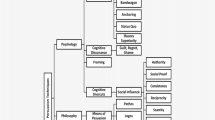Abstract
In this study, we consider the problem of selecting supermarket loyalty program members to receive physical direct mail and promotional electronic direct mail (i.e., direct email). To help marketers choose the target members for physical direct mails, we modify the customer’s preference index of our original model to predict members’ repurchase rates for a physical supermarket’s members. Based on members’ predicted repurchase rates, marketers can design proper marketing strategies for different types of supermarket member to improve marketing effectiveness. In addition, because members can only spend a short amount of time reading direct emails before choosing the products that they like, a recommender system based on a simple combination method is introduced. The system determines the most suitable combination of commodity types under the condition that a customized direct email can include only a small, fixed number of such types. In this study, member transaction records from a well-known Taiwanese supermarket were used as the test data. This supermarket’s marketing department reviewed all the experimental results and confirmed that our approach is not only superior to the current approach employed by the supermarket but also useful in designing appropriate direct-mail marketing strategies for selected supermarket members. Our approach is also suitable for direct email sent by the supermarket.


















Similar content being viewed by others
References
Chiang R-D, Wang Y-H, Chu H-C (2013) Prediction of members’ return visit rates using a time factor. Electron Commerc Res Appl 12:362–371. https://doi.org/10.1016/j.elerap.2013.06.002
Bobadilla J, Ortega F, Hernando A, Gutiérrez A (2013) Recommender systems survey. Knowl Based Syst 46:109–132. https://doi.org/10.1016/j.knosys.2013.03.012
Luo X, Yunni X, Zhu Q (2012) Incremental collaborative filtering recommender based on regularized Matrix factorization. Knowl Based Syst 27:271–280. https://doi.org/10.1016/j.knosys.2011.09.006
Linden G, Smith B, York J (2003) Amazon.com recommendations: item-to-item collaborative filtering. IEEE Internet Comput 7:76–80. https://doi.org/10.1109/MIC.2003.1167344
Bell RM, Koren Y (2007) Lessons from the Netflix prize challenge. SIGKDD Explor Newsl 9:75–79. https://doi.org/10.1145/1345448.1345465
Pradel B, Savaneary S, Delporte J, Guerif S, Rouveirol C, Usunier N, Fogelman-Souli F, Dufau-Joel F (2011) A case study in a recommender system based on purchase data. In: Proceedings of the 17th ACM SIGKDD International Conference on Knowledge Discovery and Data Mining. ACM, New York, pp 377–385
Wang J, Sarwar B, Sundaresan N (2011) Utilizing related products for post-purchase recommendation in e-commerce. In: Proceedings of the Fifth ACM Conference on Recommender Systems. ACM, New York, pp 329–332
Guan H, Huakang Li X, Cheng-Zhong MG (2013) Semi-sparse algorithm based on multi-layer optimization for recommender system. J Supercomput 66(3):1418–1437
Widmer G, Kubat M (1996) Learning in the presence of concept drift and hidden contexts. Mach Learn 23(1):69–101
Bell RM, Koren Y, Volinsky C (2008) The bellkor 2008 solution to the Netflix prize. Statistics Research Department at AT&T Research
Koren Y (2010) Collaborative filtering with temporal dynamics. Commun ACM 53:89–97. https://doi.org/10.1145/1721654.1721677
Xiang L, Yang Q (2009) Time-dependent models in collaborative filtering based recommender system. In: IEEE/WIC/ACM International Joint Conferences on Web Intelligence and Intelligent Agent Technologies (WI-IAT’09). IET, London, pp 450–457
Ding Y, Li X (2005) Time weight collaborative filtering. In: Proceedings of the 14th ACM International Conference on Information and Knowledge Management. ACM, New York, pp 485–492
Blanco-Fernández Y, Pazos-Arias JJ, López-Nores M, Gil-Solla A, Ramos-Cabrer M, García-Duque J, Fernández-Vilas A, Díaz-Redondo RP (2010) Incentivized provision of metadata, semantic reasoning and time-driven filtering: making a puzzle of personalized e-commerce. Expert Syst Appl 37:61–69. https://doi.org/10.1016/j.eswa.2009.05.022
Ma S, Li X, Ding Y, Orlowska ME (2007) A recommender system with interest-drifting. In: Web Information Systems Engineering—WISE 2007. Springer, Berlin, pp 633–642
Bobadilla J, Ortega F, Hernando A, Gutiérrez A (2013) Recommender systems survey. Knowl Based Syst 46:109–132
Luo X, Xia Y, Zhu Q (2012) Incremental collaborative filtering recommender based on regularized matrix factorization. Knowl Based Syst 27:271–280
Wang Z, Liu Y, Chiu S (2016) An efficient parallel collaborative filtering algorithm on multi-GPU platform. J Supercomput 72(6):2080–2094
Wu S-J (2016) Commodities selection of supermarket Email-flyers by recommender systems In: The 5th International Conference on Frontier Computing—Theory, Technologies and Applications (FC 2016), Tokyo
Author information
Authors and Affiliations
Corresponding author
Rights and permissions
About this article
Cite this article
Wu, SJ., Chiang, RD. & Wu, TF. Direct mail promotion mechanisms and their application in supermarkets. J Supercomput 76, 1398–1415 (2020). https://doi.org/10.1007/s11227-018-2259-z
Published:
Issue Date:
DOI: https://doi.org/10.1007/s11227-018-2259-z




